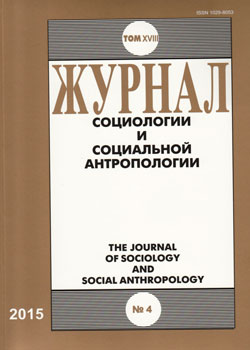The Development and Historical Legacy of Elite Clubs in Russia
Keywords:
elite clubs, social clubs, elite, Russian nobility, genesis
Abstract
This article is reviewing the phenomenon of elite clubs, in particular the dynamics of their development in Russia in the pre-revolutionary period (since the second half of the XVIII century until the beginning of XX century) and in the post-Soviet period (from the beginning of Perestroika until the present time). The lack of elite clubs in Soviet Russia (with an abundance of clubs in general) was resulting from the significant centralization of power and the prevailing role of the state. The author identifies three stages of elite clubs evolution: the emergence, development, decline / stabilization. The reviewed periods are compared on the basis of the similar social-economic and social-political context. It is noted that the prerequisite for the emerging of the clubs is the consolidation of the social stratum which in the future would comprise the prevailing part of the club’s members. The author draws attention to the fact that clubs are a borrowed institution which originated in Great Britain and later spread to other countries. She highlights one of the major differences between these stages, namely in the lifespan of clubs. The author presumes that in today’s Russia the elite clubs are stabilizing and are furthermore opting to follow its foreign prototypes. With regard to the future existence of clubs two options are suggested. The first option assumes the intensification of globalization trends and the growing impact of overseas practices. The second option considers the possibility of expanding conservative views and the growing tendency to state closure. In this case the number of clubs will diminish or they will be entirely replaced by other organizations.
Published
2015-05-20
How to Cite
Leshukova, P. (2015). The Development and Historical Legacy of Elite Clubs in Russia . ZHURNAL SOTSIOLOGII I SOTSIALNOY ANTROPOLOGII (The Journal of Sociology and Social Anthropology), 18(4), 24–36. Retrieved from http://jourssa.ru/jourssa/article/view/412
Section
Sociology of Elites

